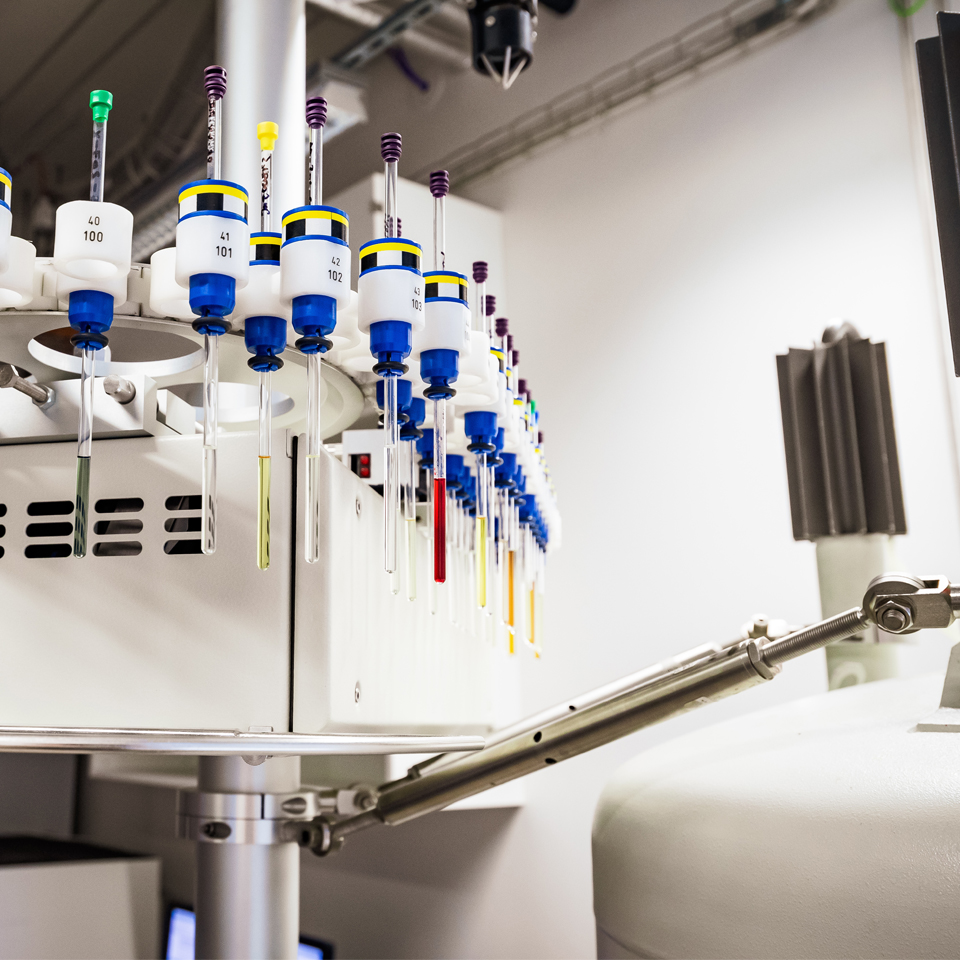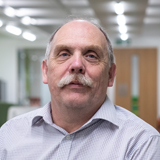Dr Martin B Smith
Senior Lecturer in Inorganic Chemistry – Chemistry
Dr Martin Smith’s research covers all aspects of phosphorus chemistry, including ligand design and synthesis. He has expertise in co-ordination and organometallic chemistry, multinuclear NMR spectroscopy, single crystal X-ray crystallography, and homogenous catalysis. His work is also advancing the development of new chemosensors, and the use of functional polymers for a variety of medical and energy-based applications.
The chemistry of sustainable catalysts
Coordination compounds are essential for biochemical processes and medicines. They also play an important role as industrial catalysts. Today, many catalysts are used to prepare sustainable chemical feedstocks from renewable sources. Martin’s research is contributing to the development of novel catalysts that are more cost effective and less environmentally harmful.
My research group has a longstanding interest in the chemistry of phosphorus-based compounds. These compounds are really common – they’re essential for growing crops and are used in some fizzy drinks. They’re also found in our bodies – in the processes that produce energy, in our DNA, and even in our urine!
As part of our research, we prepare specific types of phosphorus compounds called ligands. Ligands help control the properties of metal-based catalysts, so they play a really important role in fine-tuning their ability to promote key chemical reactions.
The ligands we study have a strong affinity for different types of metals – especially the expensive ones like platinum, gold, and rhodium. Because these elements are becoming scarce, we’re looking at alternative cheaper, more abundant metals to use instead.

One very important aspect of our work is knowing what we’ve made, both in solution and solid state. We use sophisticated techniques – like NMR spectroscopy and X-ray crystallography – to tell us exactly what’s in our compounds.
Knowing the precise chemical composition of a catalyst is crucial – we need to know exactly what the active agent is – rather than something else like dust or other impurities influencing the reaction.
Over the years, our group has been fortunate to work with several industrial collaborators on some really cool projects. With Solvay, we’ve been investigating fire retardant materials, and with Sasol we’ve been studying homogenous catalysts that efficiently create valuable chemical feedstocks.
I’m one of eight academics involved in the new mini-CDT, SlowCat (Securing a sustainable fuel supply through controlled synthesis of low-dimensional catalysts). I’m co-supervisor of one of the PhD students, Xuetong Pei, who’s developing new catalysts for making butanol from ethanol.
Knowing the precise chemical composition of a catalyst is crucial – we need to know exactly what the active agent is – rather than something else like dust or other impurities influencing the reaction.
My research journey
I completed my undergraduate studies at the University of Warwick, graduating (in 1987) with a BSc in Chemistry. Thanks to my very enthusiastic supervisor, this is where I developed my interest in phosphorus chemistry and its importance in homogenous catalysis.
Having secured a CASE Studentship, I moved to the University of Bristol for my PhD in Inorganic Chemistry, exploring “The Synthesis, Characterisation and Catalytic Properties of Nickel, Palladium and Platinum Complexes with Tris(hydroxymethyl)phosphine and Tris(cyanoethyl)phosphine”.
My PhD gave me my first experience of working in industry – with Albright and Wilson – and certainly taught me considerable respect for the chemistry I was working on. We had to conduct our experiments on the very top floor of the R&D building due to the highly explosive nature of the work. But my industrial supervisor regularly stood beside me, in a very relaxed manner, casually smoking his pipe!
After postdoctoral roles at Bristol and University College London, I was awarded a Royal Society Fellowship which supported my ongoing research at the University of British Columbia laboratories.
In 1994, I returned to the UK and secured a postdoctoral position at Loughborough. Just three years later, I became a Lecturer and was promoted to Senior Lecturer in 2008.
My team’s work has provided us with plenty of opportunities to conduct novel research and share our findings with other like-minded scientists from around the world.
